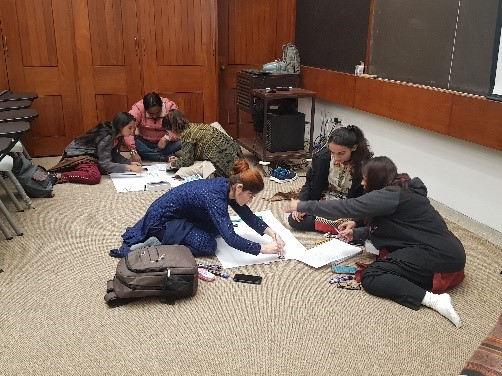Flipped classroom pedagogy: A contemporary step towards impactful learning
This is story is written by Laila Akber Cassum, from School of Nursing and Midwifery, Pakistan.
“It is the supreme art of the teacher to awaken joy in creative expression and knowledge." – Albert Einstein
As a professional, nursing educator working at the Aga Khan University School of Nursing and Midwifery Karachi, my teaching philosophy aims to empower and facilitate students' academic journeys, through self-directed learning approaches. I strongly believe in developing the art of critical thinking, problem-solving, and decision-making skills among my students. In order to breed a competent, compassionate, and critical-thinking, nursing task force, it is imperative to accept and adapt to shifts in teaching and learning and its associated methodology.
Our students live in an era of rapid technological advancement and are quick to adapt to using technology. Hence, as demands change with time, it has become essential to upgrade and integrate various teaching strategies from traditional in-classroom learning to learning online.
As a nursing educator, I firmly believe in the concept of change and understand that students require a learning environment that is interactive and fun. To do so, I adopted the Flipped Classroom Pedagogy which transformed traditional in-person lectures for two courses in the Post-RN BScN program. Although the modification of my teaching strategies was time-consuming, the impact yielded productive outcomes such as active learning and enhanced material retention.
Flipped Classroom Pedagogy
The Flipped Classroom Approach inverts traditional ideas of in-classroom learning and focuses on how course material is delivered outside the classroom, in the form of pre-reading materials, podcasts/vodcasts, voice-over power points (VOPP), and videos. Within this approach, class time is utilized to engage students in collaborative learning such as group-based discussion, reflections, mini-group presentations, and case studies.

I utilized this strategy in two courses: Culture, Health and Society and Advance Concepts in Adult Health Nursing.
The Process
I implemented this approach in the Culture, Health and Society Course, which is purely a theoretical course offered through a blended modality. There were seven modules in this course, four of which were transformed into the flipped classroom approach.
In Advance Concepts in Adult Health Nursing, the flipped classroom approach was applied to teach concepts like the Nursing Process, Clinical Concept Mapping, and Clinical Incident Analysis.
The process was implemented in two phases:
Phase I:
Class modules were converted into an online learning experience, where Vodcasts, Podcasts and VOPPs were developed. Additionally, pre-reading materials consisting of peer-reviewed articles were sent to students 7 – 10 days prior to class. Announcements for the Flipped class were sent via email and through the Virtual Learning Environment (VLE), which is an online learning management system. The students were encouraged to post questions onto VLE with regard to the concepts they were to learn, to deepen their collective understanding of the content.
Phase II:
In this phase, sessions were designed to utilize collaborative and interactive classroom activities which enabled the students to explore case studies and critically think about questions emerging from the content. This exploration was followed by group discussions, presentations, reflections, and a gallery walk.
The class used the in-person time to provide feedback to each other and ask questions. The activity used to structure the feedback process was called Start, Stop, and Continue, where the students were given three, coloured sticky notes and they in turn pasted feedback onto the correlating columns on the whiteboard. This strategy was inspired by the Teaching and Learning Enhancement Workshops and the Rethinking Teaching Workshop, facilitated by AKU's Networks of Quality, Teaching and Learning.
The session was concluded with a quiz using Kahoot and with reflections on Padlet.
Challenges
The greatest obstacle to implement the Flipped Classroom Approach involved the use of technology. Unfortunately, the Vodcast and VOPP files which I had created were corrupted and reported an error when the students tried to access them. In response, I spent time developing a new Vodcast which I uploaded without any issues. The process can be demotivating, however, the feedback received after class was rejuvenating and reaffirmed my aim to explore this new pedagogy.
Student's Feedback
The Flipped Classroom Pedagogy was highly valued by the learners, with many wanting to continue to learn through this approach. One student mentioned, “The class was interactive and interesting. Group discussions and the activities helped clarify the concepts."
Another student shared, “I learned a lot of new things in these two sessions. I better understood the nursing process and Clinical Concept Mapping which is a new and very effective tool for me."
Lastly, the students appreciated the brainstorming activities, gallery tour, and its critique on their developed Clinical Concept Mapping. In addition, the concluding activity on Kahoot and Padlet was thoroughly enjoyed, as they created a space for reflection.


